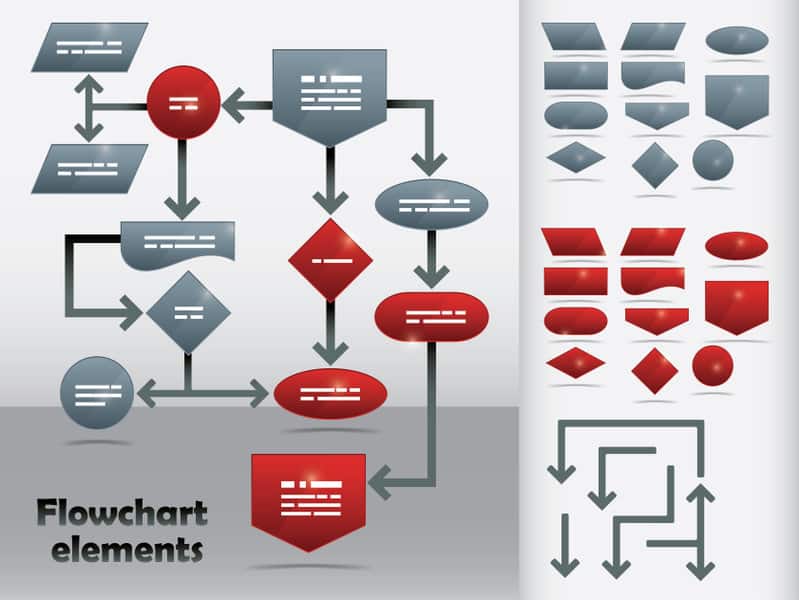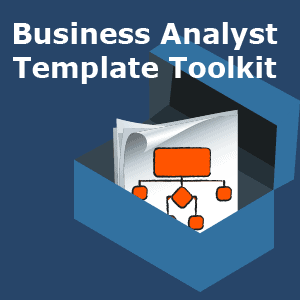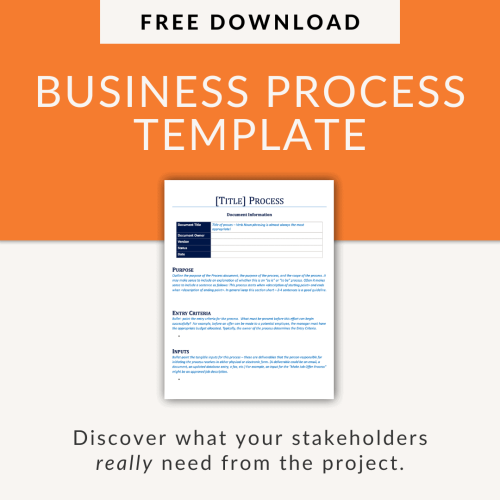Business process documentation is a description of a business process using words, models, and symbols to designate exactly how the business process should function in either its current state (AS-IS) or its future state (TO-BE).
Understanding the underlying business processes and producing business process documentation is extremely important to develop to help improve current operations and to understand the complexities of the business operations. Reviewing the business process documentation and determining the best way for the business process to flow to avoid bottlenecks and to speed up the operations is key for today’s business organisations (including startups) seeking out competitive advantage against its competitors.
For startups
Having a business process documentation set of the enterprise will help remove chaos and provide the basis to handle things more efficiently and consistently.
Business process analysis provides a view of an organisation that should be focussed on the customer.
In recent years, the business process view of an organisation has increased in popularity especially when considering business improvements.
Table of Contents
What is Business Process Documentation?
Business process documentation is a step-by-step description of how to execute a business process from start to finish and describe how a business process should be executed.
Benefits of Business Process Documentation
Some of the benefits of having business process documentation include:
Business process optimisation – identify bottlenecks and inefficiencies by documenting the exact business processes.
Business process automation – business process documentation helps discover tasks that can be easily automated, saving time and resources.
Providing a corporate knowledge base – including have corporate memory that can be used as an asset to the enterprise. This is especially important as employees enter or leave the organisation.
Operational consistency – when everyone follows the same process, you create consistency and uphold your standard.
Improve efficiency – clear instructions reduce the number of decisions, remove confusion, and allow employees to spend less time completing tasks.
- Reduce mistakes.
- Ensure compliance – makes it easier to remember to follow policies and regulations.
- Outsource easier (business processing outsourcing) – when working with contractors, process documents help them quickly adapt to your way of working, even if they are remote.
How to Create Business Process Documentation
Try to involve everybody who is part of the business process and follow these steps:
Step 1: Define Business Process Scope
Decide which business process you are going to document and determine its purpose and scope. Establish what should be the desired outcome of the business process and list down what resources are necessary to carry out each of the business process steps.
Step 2: Organise the Business Process Steps
Gather all information on the business process steps from start to finish and identify what business event, triggers the business process.
Step 3: Describe Who is involved in the Business Process
Decide each business worker who will be responsible for the process tasks. Define their roles.
Step 4: Note Business Exceptions to the Normal Business Process Flow
A business process may not always follow the same flow due to various reasons. Mention business process flow exceptions and what business process steps will be taken to manage the business exceptions.
Step 5: Review and Test the Business Process
Gather everyone involved and review the business process. Once done, test the business process and see whether anything needs to be improved.
Business Process Documentation Template
The following are useful sections to consider in a business process documentation template:
- Purpose.
- Entry Criteria.
- Inputs.
- Workflow Diagram.
- Activity Descriptions.
- Exceptions.
- Business Rules.
- Outputs.
- Exit Criteria.
- Roles & Responsibilities.
- Metrics.
The free Bridging the Gap Business Process Template
Purpose
Outline the purpose of the business process document, the purpose of the business process, and the scope of the business process. It may make sense to include an explanation of whether this is an “AS-IS” or “TO-BE” business process.
Often it makes sense to include a sentence as follows: This process starts when and ends when . In general keep this section short – 2-4 sentences is a good guideline.
Entry Criteria
List the entry criteria for the process. What must be present before this effort can begin successfully?
For example, before an offer can be made to a potential employee, the manager must have the appropriate budget allocated. Typically, the owner of the business process determines the entry criteria.
Inputs
List the tangible inputs for this process – these are deliverables that the person responsible for initiating the process receives in either physical or electronic form.
Workflow Diagram
Include a visual diagram of the workflow indicating the relationship between activities in the process.
Activity Descriptions
Describe each of the activities of the process in narrative form. Use headers as appropriate.
Be sure to use consistent terminology in describing each step or activity.
Exceptions
List the exceptions and describe the exception in narrative form.
Business Rules
If appropriate, include a list of relevant business rules here and reference the steps from the activity description section in which they are enforced.
If your organisation has a business rules repository, you might instead include a section to reference the appropriate business rules or embed links/references to those rules within the activity descriptions themselves and delete this section.
Outputs
List the tangible outputs or deliverables for this process.
Exit Criteria
List the exit criteria for the process. What must be present before this effort can end successfully?
Typically, the entity that receives the output of the process sets the exit criteria. If you are documenting multiple inter-related processes, these exit criteria would become the entry criteria for the next process.
Roles & Responsibilities
Add roles and bullet point responsibilities for each role. Remember that one person can full-fill more than one role in a process or multiple people can share the same role.
Make sure the terms used here for roles and responsibilities are consistent with the terms in the workflow diagram and the activity description sections.
Metrics
Capture how the effectiveness of the process will be measured. You might choose to use this section to be very specific and detail quantitative measures.
For example, measures of customer service are duration of how long customers have to wait on the phone before their call is answered, or duration of how long before their issue is resolved. Or, you could choose to include general measures of success, such as “increased customer satisfaction.”
Business Process Documentation Best Practices
Let’s take a look at a few do’s and don’ts as well:
- Keep business process documentation clear and concise. Focus on being specific – use terminology which is suited to your business organisation.
- Keep business process documents accessible. Store documents in a location that is easy to accessible to stakeholders so they can see and review easily.
- Make it easy to maintain business process documentation. Maintaining the business process documentation shouldn’t have to take long and should be easily to do.
- Control business process document changes. Version your business process documentation.
- Review business process documentation regularly. Make sure that the business process documentation is current, relevant and reviewed with regularly with stakeholders.
- Keep an eye out for business process improvements. While you document a process, pay attention to how it can be improved.
Business Process Documentation – Conclusion
As a business analyst
When you are starting a new project or analysing a new domain, you want to start by analysing the business process. This work isn’t just for business process analysts! All business analysts can benefit from being able to apply this technique to discover, analyse, and validate the details of the AS-IS process, as well as identify enhancements for the TO-BE business process model.
You can learn more on business process documentation and business process mapping from an excellent course from Business Analysis Excellence.
Business process management certification programs




